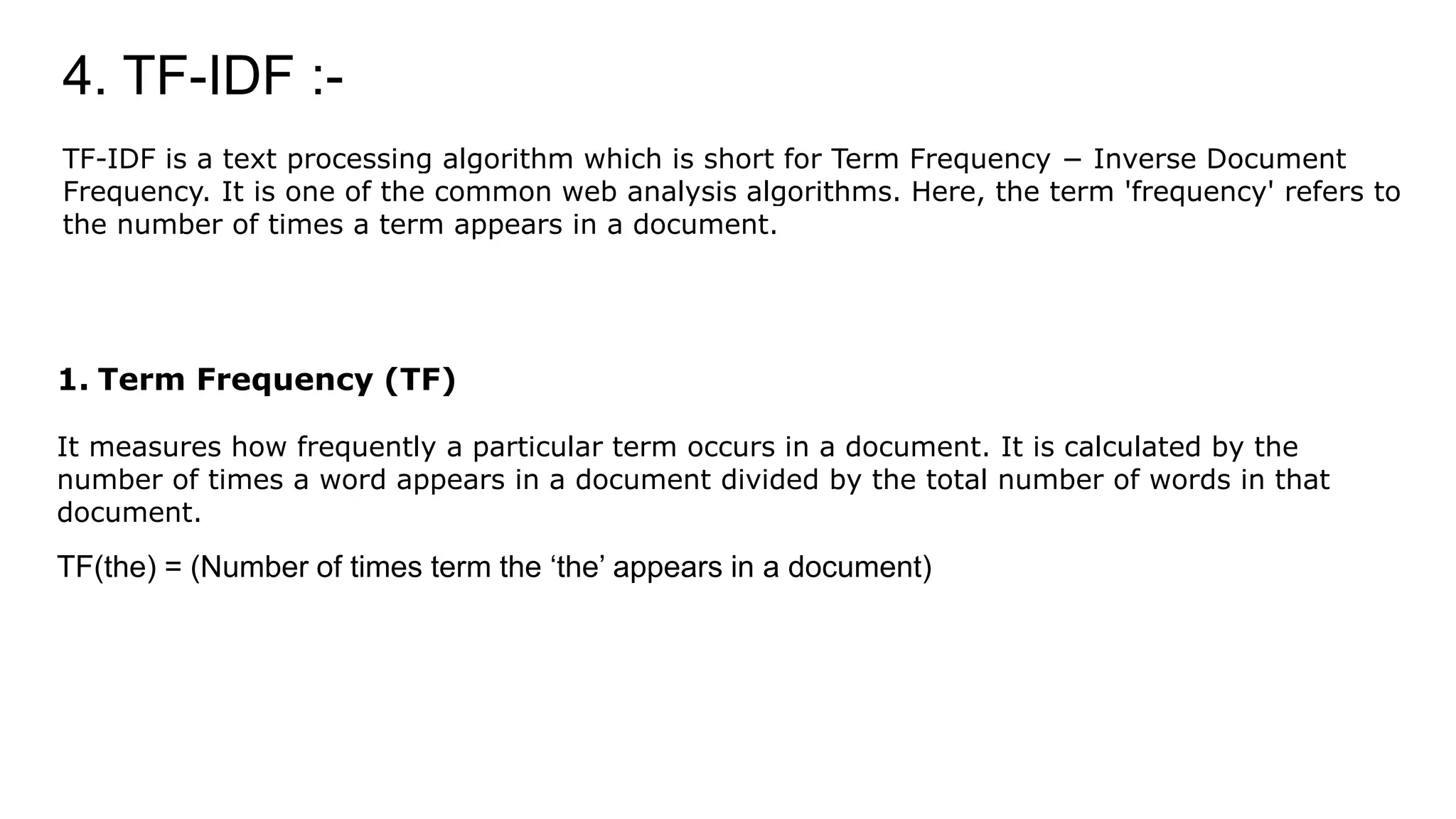MapReduce is a programming model that processes large datasets in parallel, utilizing a map phase to create key-value pairs and a reduce phase to aggregate these pairs. It implements various algorithms for tasks such as sorting, searching, indexing, and tf-idf to optimize data processing in distributed systems. The document describes the workflow of MapReduce and provides examples of its applications in data analysis.
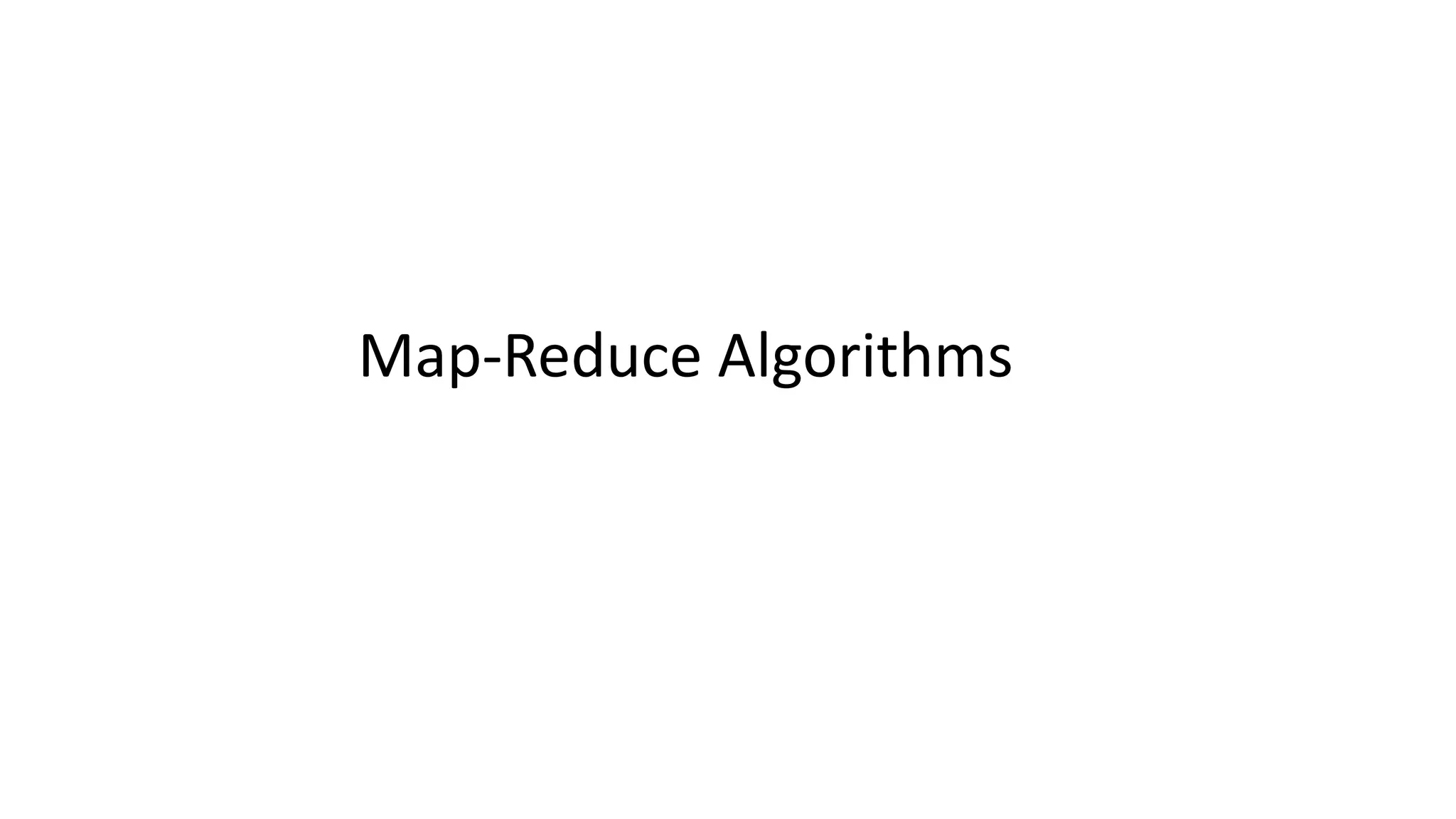
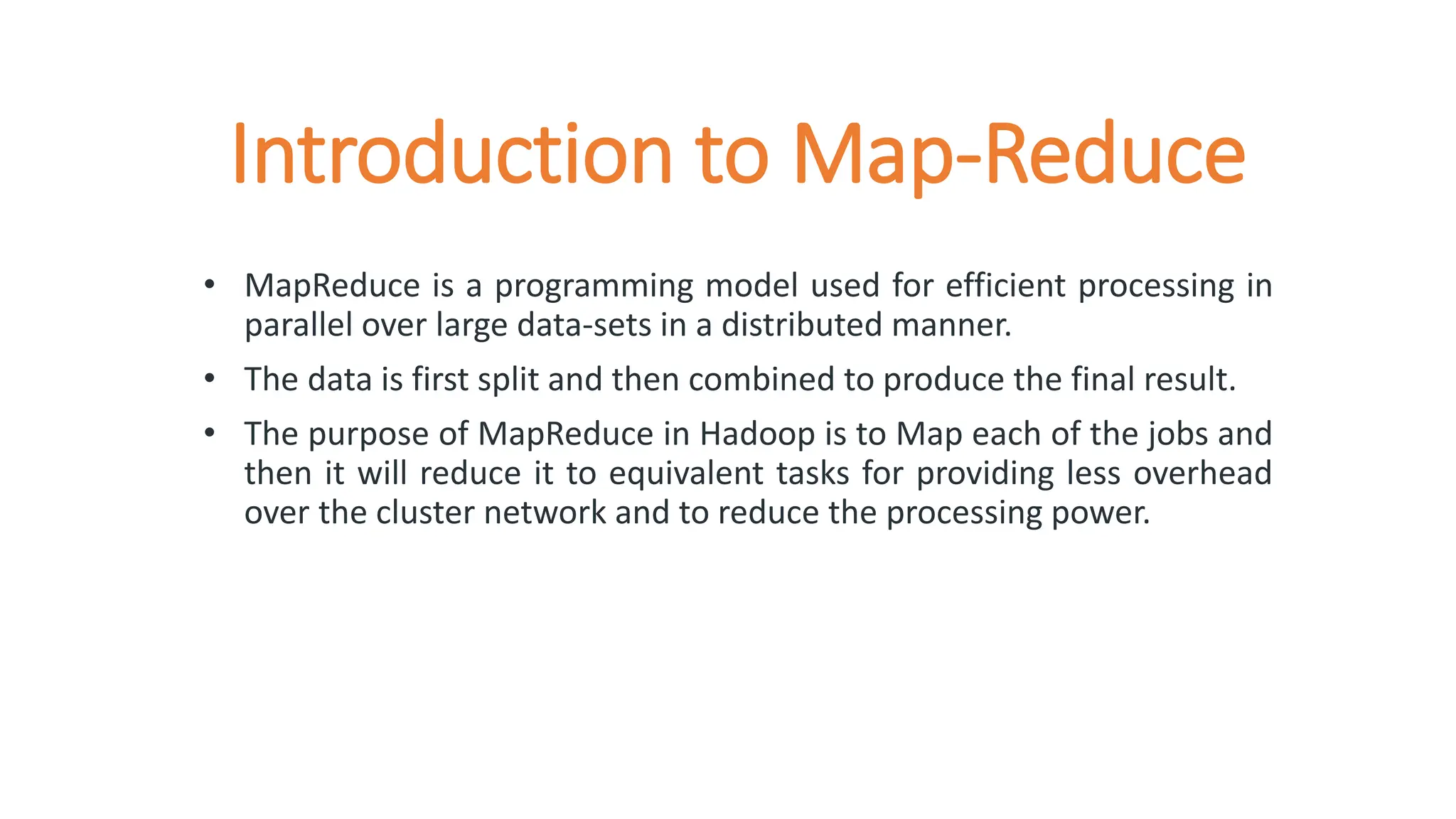
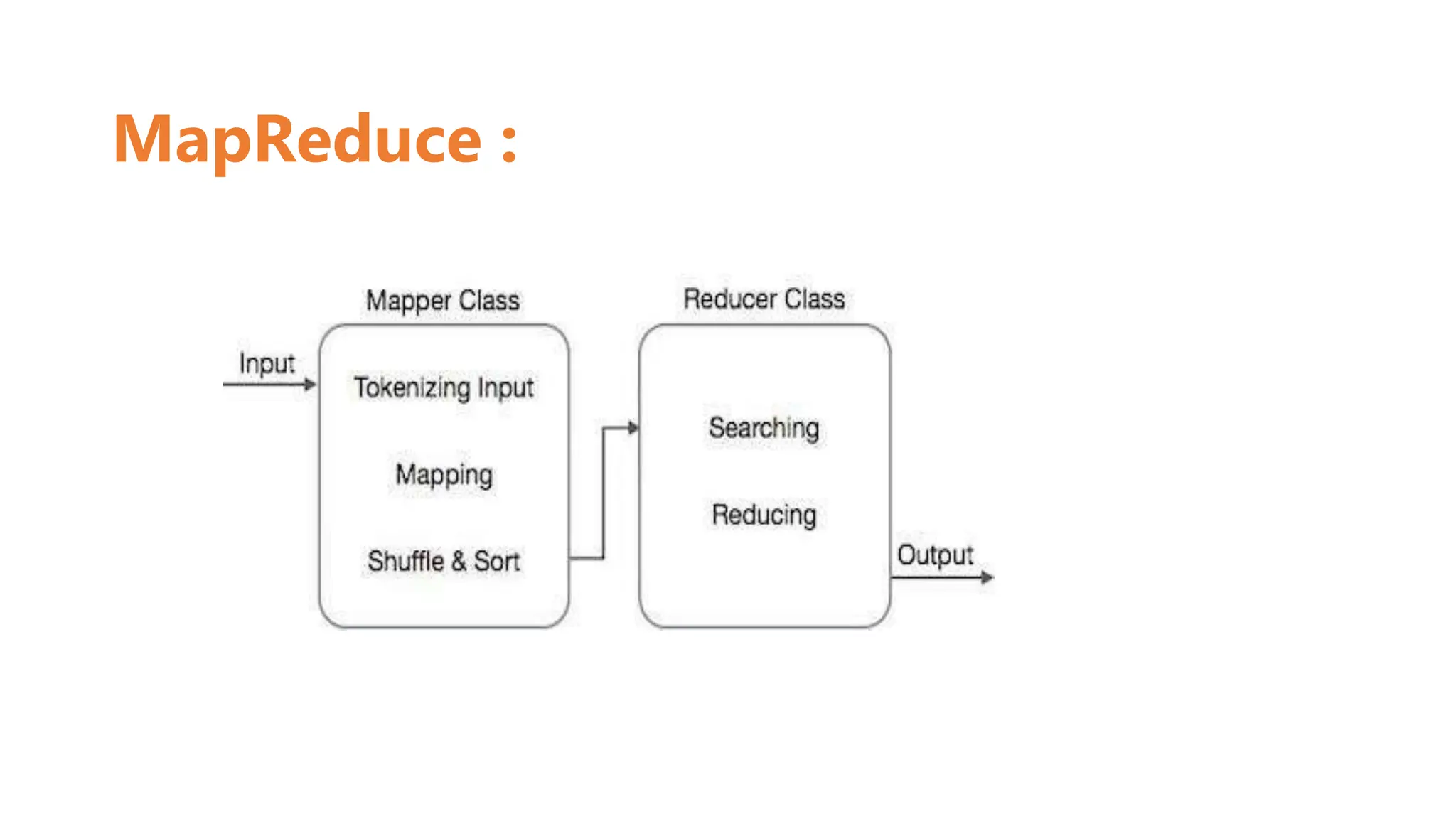




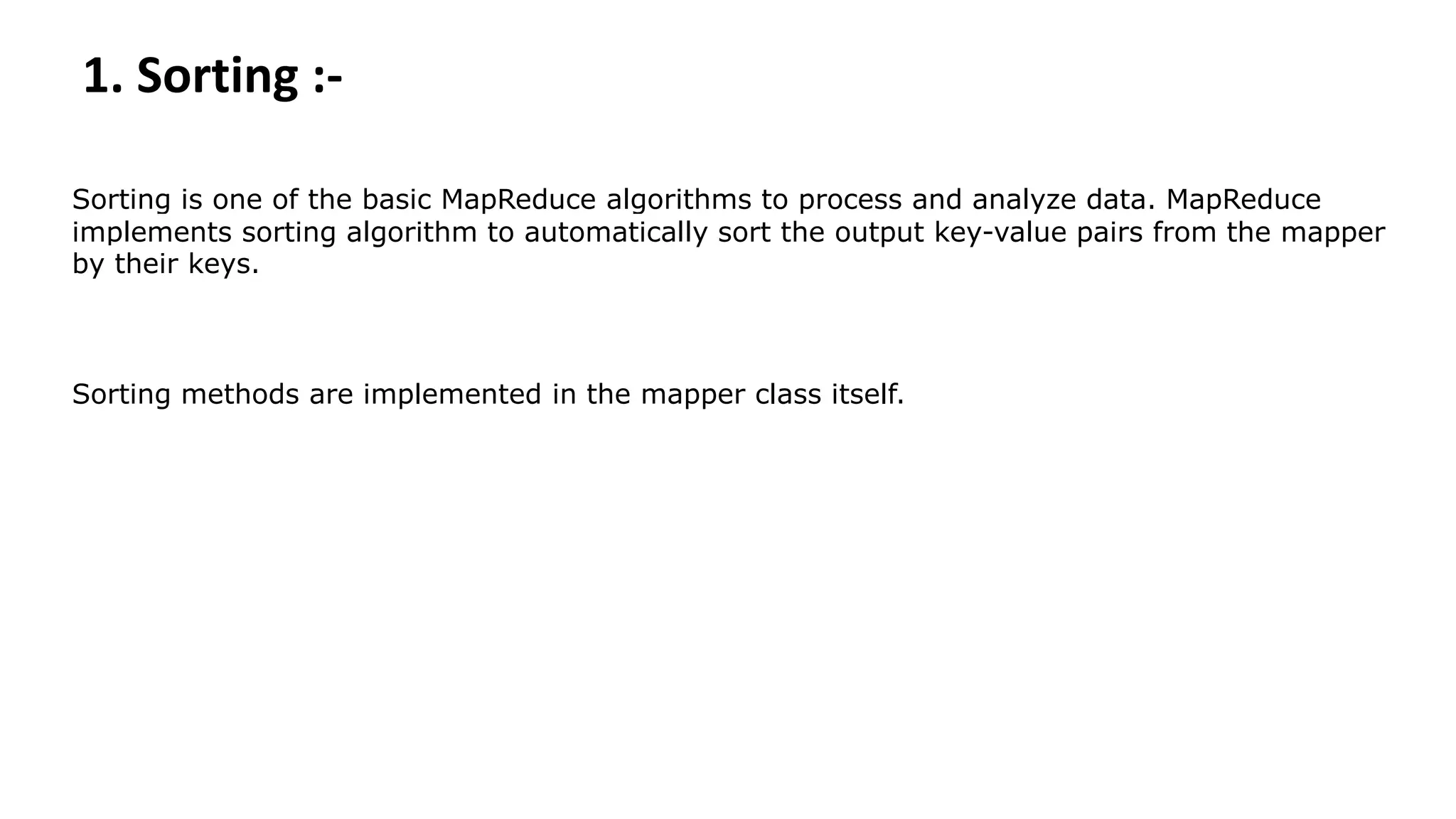
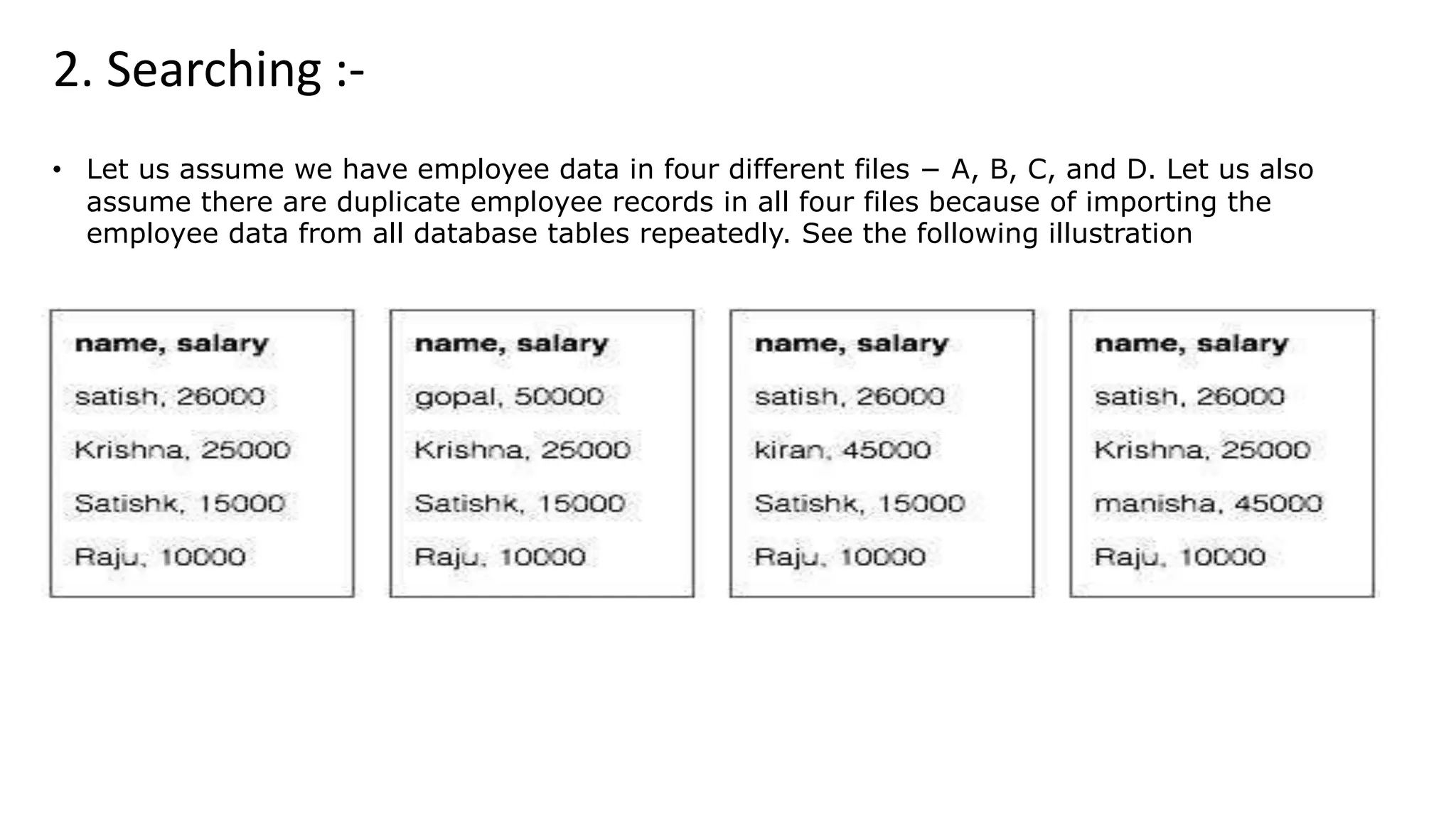
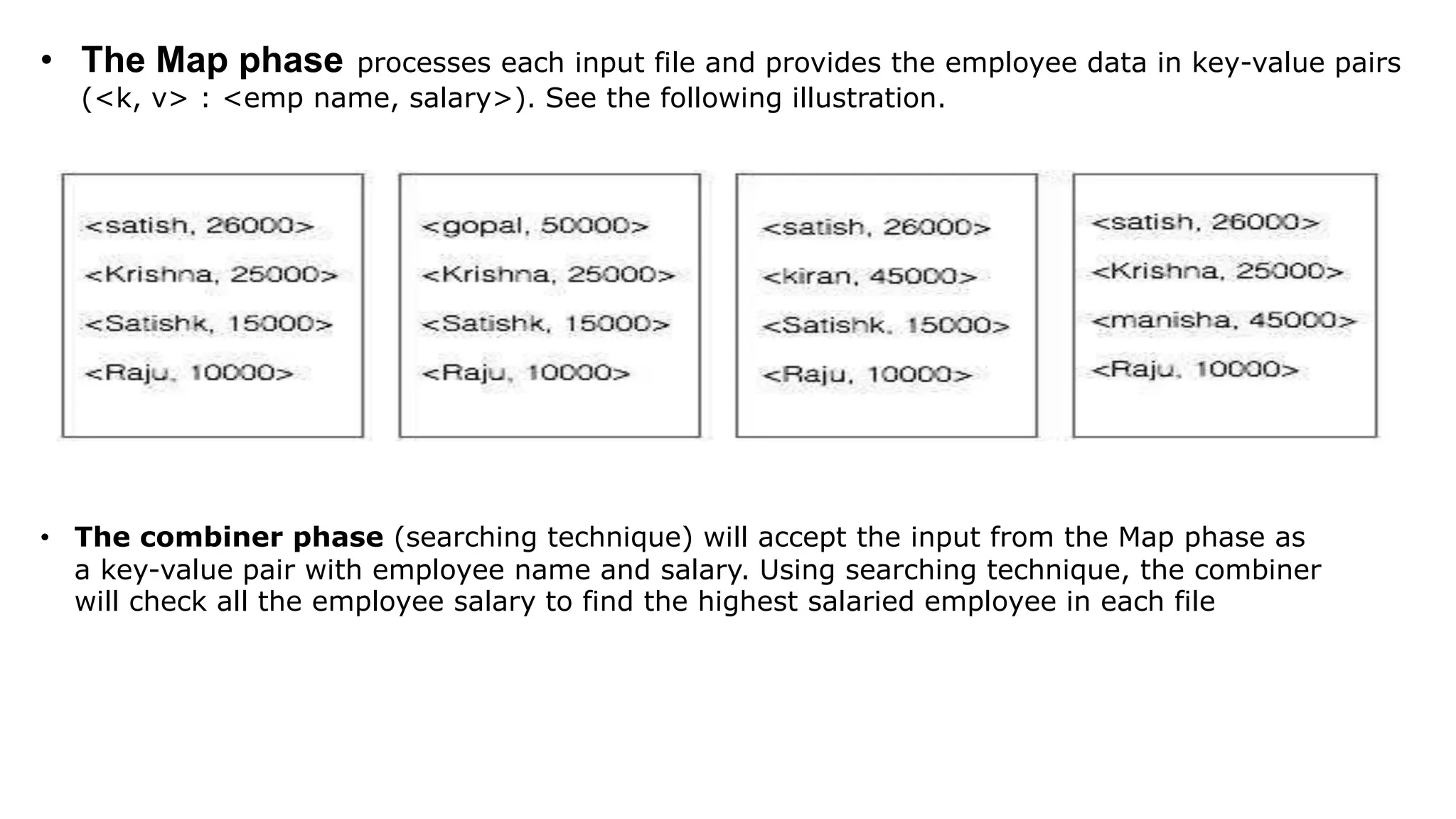

![3. Indexing
:-
Normally indexing is used to point to a particular data and its address. It performs batch
indexing on the input files for a particular Mapper.
The following text is the input for inverted indexing. Here T[0], T[1], and t[2] are the file
names and their content are in double quotes.
T[0] = "it is what it is"
T[1] = "what is it"
T[2] = "it is a banana"
After applying the Indexing algorithm, we get the following output −
"a": {2}
"banana": {2}
"is": {0, 1, 2}
"it": {0, 1, 2}
"what": {0, 1}](https://image.slidesharecdn.com/introductiontomap-reduce-240423172012-c11eb8f0/75/Introduction-to-Map-Reduce-in-Hadoop-pptx-12-2048.jpg)
